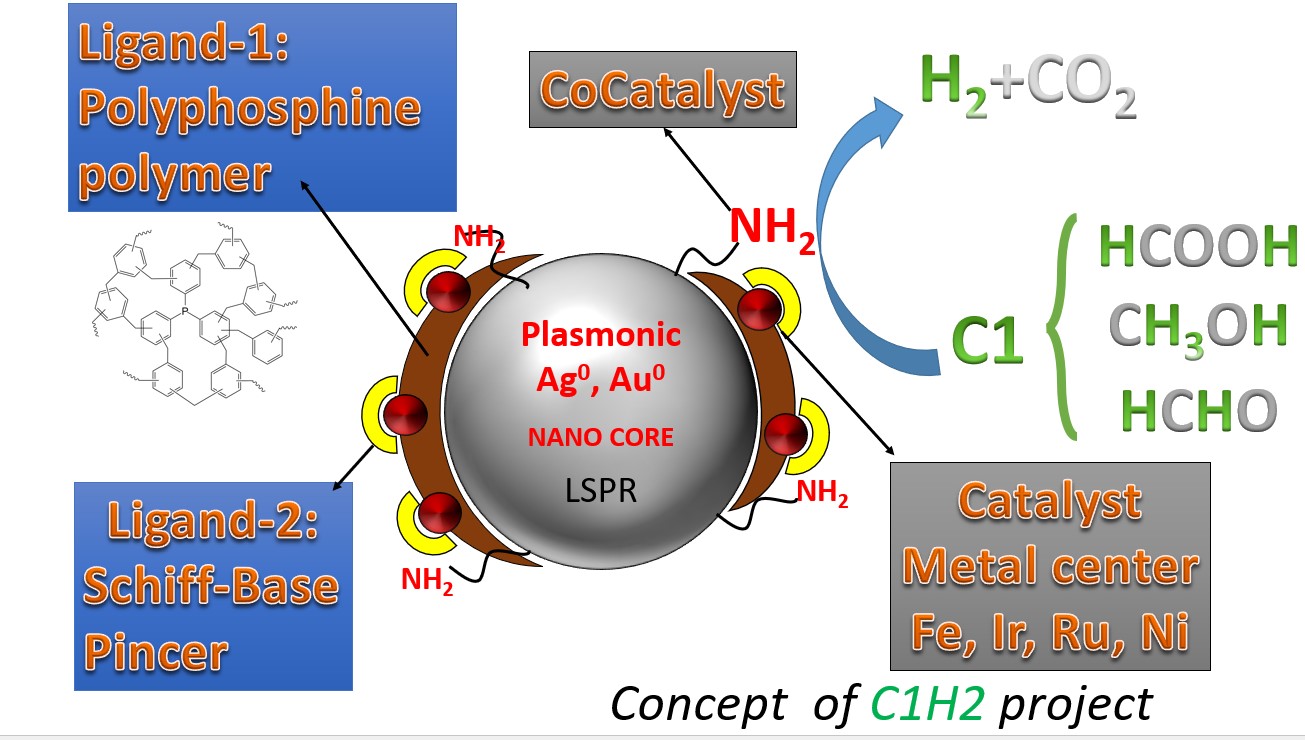Catalytic production of H2 at near-ambient (P~1bar,T<1000C) conditions via dehydrogenation of C1-substrates (formic acid, methanol, methane) dears key-technical and economic benefits. Next technological-readiness challenges include: [i] development of heterogenised-molecular catalysts bearing “all-in-one” i.e. [the molecular catalyst, the cocatalyst and a functional-solid-support]. [ii] optimization of the catalytic system for long-term operation. [iii] flexibility of the catalytic system to operate with different C1-substrates: formic acid, methanol, formaldehyde as [cost-efficiency]-eligible C1-substrates. The C1H2 project aims at the development of innovative hybrid catalytic systems, meeting these technological-readiness challenges. Specific objectives of C1H2 proposal aim at the development of novel hybrid nanocatalytic systems with optimized {metal/ligand/cocatalyst/solid support} incorporated “all-in-one”: [i] a substrate-specific molecular catalyst [SSMC], [ii] a cocatalyst, [iii] a nanoparticle-based scaffold support [NPS]. The substrate-specific molecular catalyst [SSMC] will be designed/optimized for maximum H2-production for the C1-Substrates i.e. Formic Acid, Formaldehyde or Methanol. The SSMC will consist of earth abundant metals (Fe, Ni, Cu) or noble metals (Ru, Ir) with L1 and/or L2 ligands, where L1=phosphine-based and L2= Nitrogen and Oxygen based ligands. The nanoparticle-based scaffold support [NPS] will be Plasmonic (Ag0, Au0) nanoparticles encapsulated by a nano-thin Polyphosphine matrix will serve as promoter of the H2-generation catalytic activity and long-term stabilizer of the SSMC. The Plasmonic (Ag0, Au0) nanoparticles: [a] will serve as the core-solid-support where all the nanohybrid {SSMC}@[NPS]@{SiO2-NH2} will be assembled. [b] the photoinduced plasmon resonance of (Ag0, Au0) will be used to switch-on (i.e. as thermal source) the catalytic cycling, and the (Localized Surface Plasmonic Resonance, LSPR) of (Ag0, Au0) will be exploited to enhance the catalytic performance. With these aims, the C1H2 project envisages towards a highly ambitious unifying approach that targets technological-readiness advancements in H2-production catalysis, well beyond the current-stet-of-the art.

